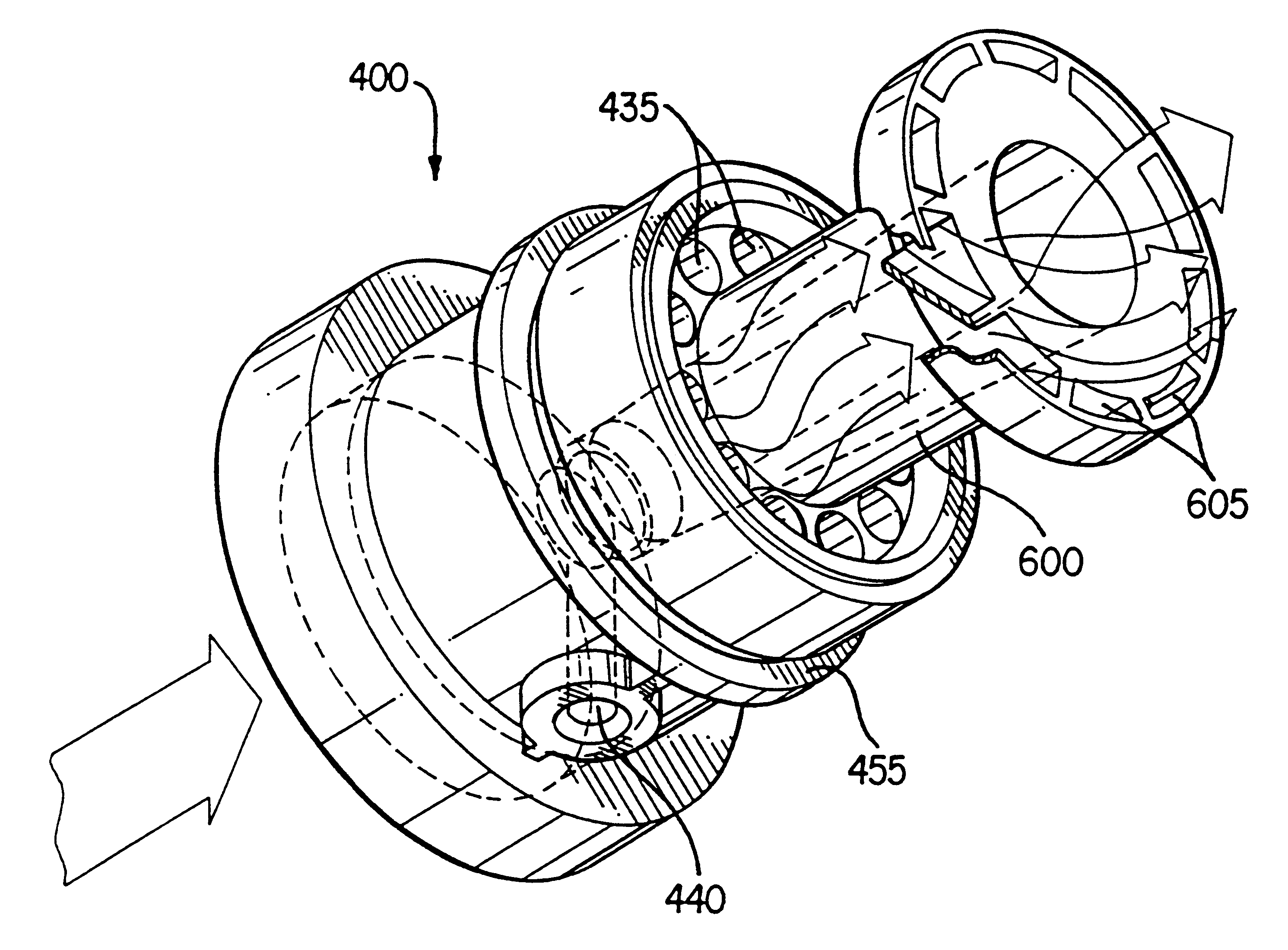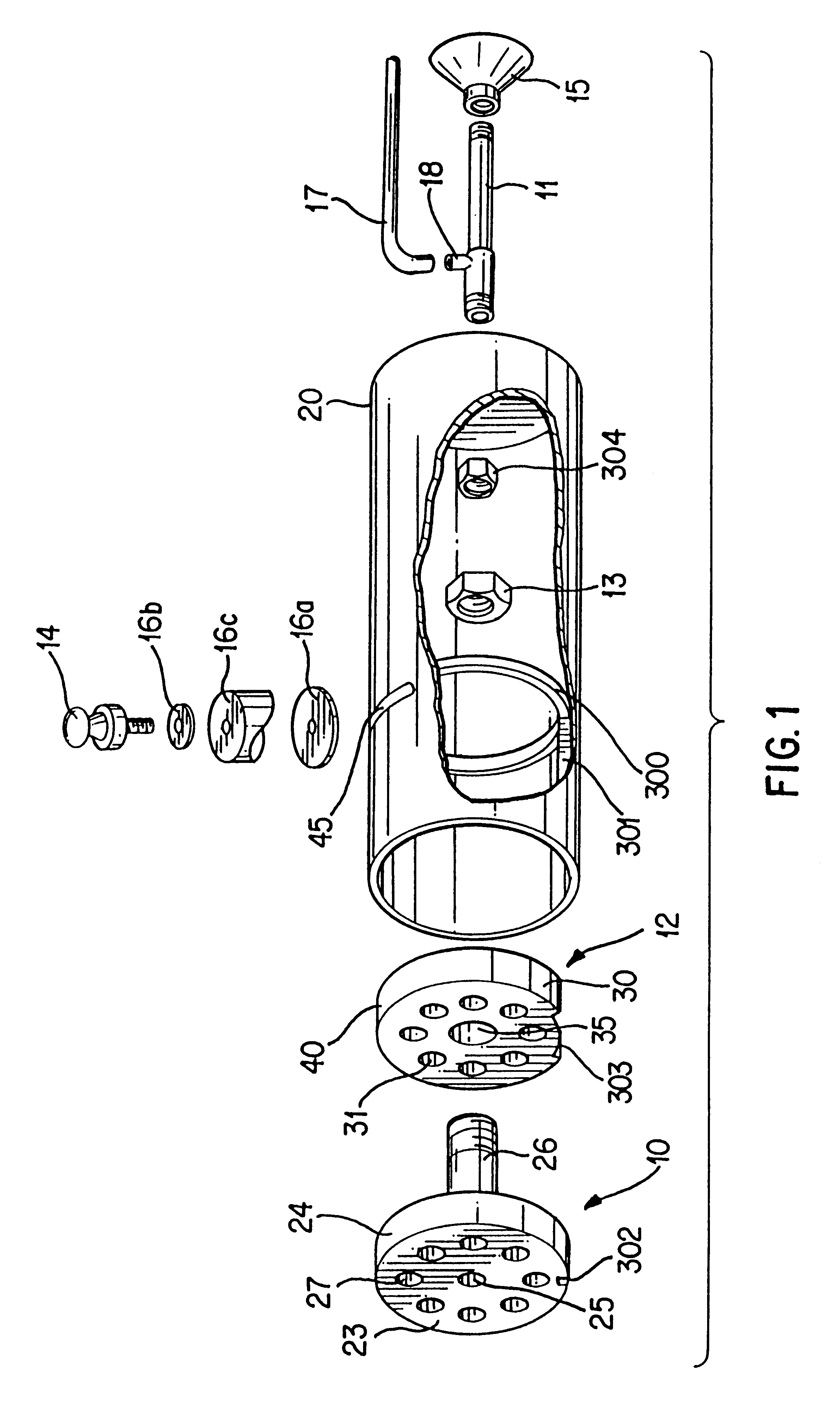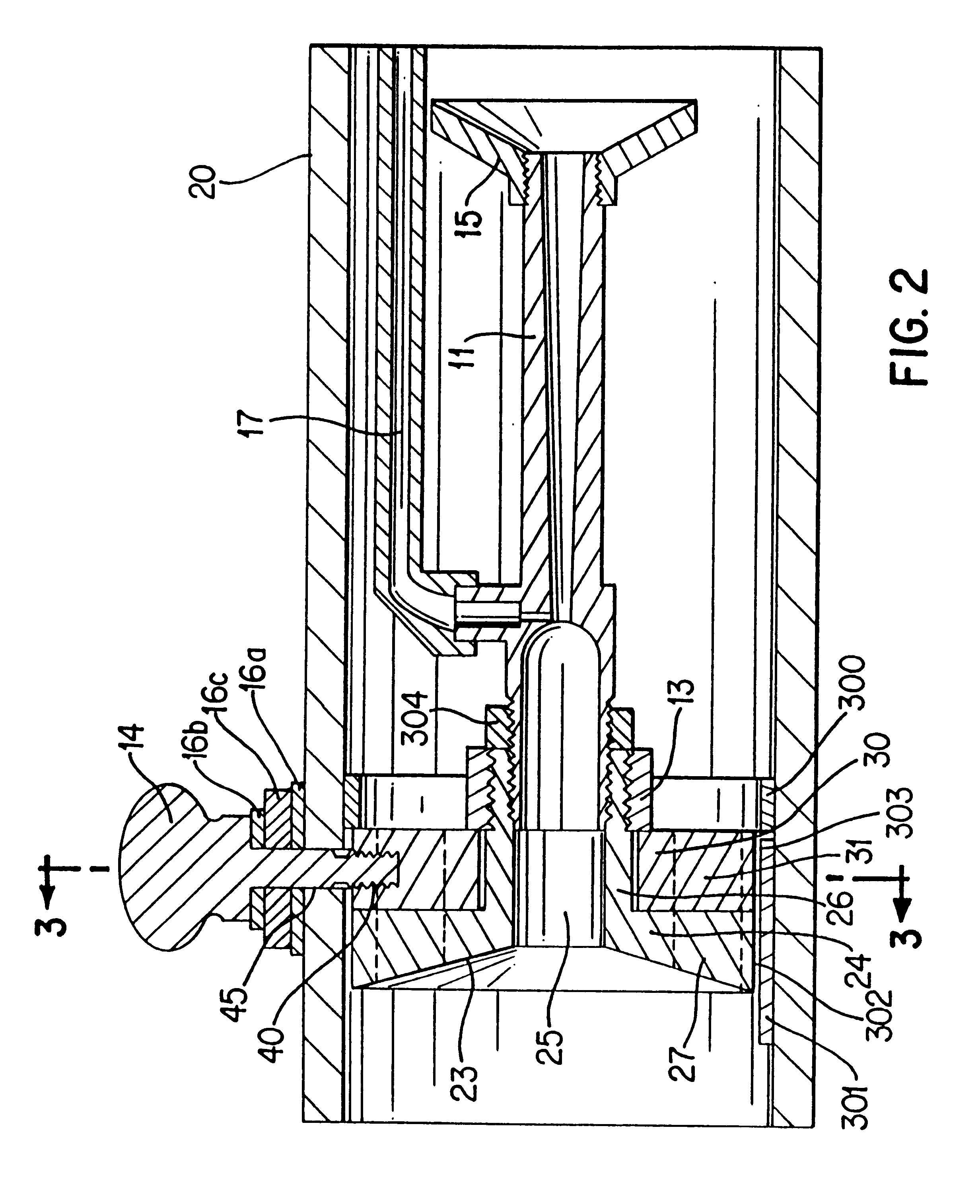In-line venturi
a venturi and tube technology, applied in water supply installation, process and machine control, instruments, etc., can solve the problems of requiring complex plumbing, expensive, bulky, and single tube can only operate over a narrow range of fluid flow rate, and achieve constant and consistent operation, increase the effect of venturi, and constant aspiration ra
- Summary
- Abstract
- Description
- Claims
- Application Information
AI Technical Summary
Benefits of technology
Problems solved by technology
Method used
Image
Examples
Embodiment Construction
FIGS. 1 and 2 show a preferred embodiment of the present invention installed within a conduit 20 through which a fluid can flow in a stream. In this embodiment a venturi support body, shown generally at 10, comprises a disc 24 which is sized to closely fit within cylindrical conduit 20. Any suitable means for securing disc 24 in a sealing relationship within the conduit 20 can be used (for example, a suitable adhesive, a shoulder, or disc 24 and conduit 20 can be molded as one integral unit). The securing means should be sufficiently strong to withstand the pressures of the fluid flow stream and to keep the support body in sealing relationship with the conduit. In the preferred embodiment shown in FIGS. 1 and 2, an inner seating ring 300, attached to the inside of conduit 20, prevents downstream movement of disc 24, while allowing withdrawal of the unit, in the upstream direction, for maintenance if necessary. A key 301, attached to the inside of conduit 20, fits through keyway 302 ...
PUM
 Login to View More
Login to View More Abstract
Description
Claims
Application Information
 Login to View More
Login to View More - R&D
- Intellectual Property
- Life Sciences
- Materials
- Tech Scout
- Unparalleled Data Quality
- Higher Quality Content
- 60% Fewer Hallucinations
Browse by: Latest US Patents, China's latest patents, Technical Efficacy Thesaurus, Application Domain, Technology Topic, Popular Technical Reports.
© 2025 PatSnap. All rights reserved.Legal|Privacy policy|Modern Slavery Act Transparency Statement|Sitemap|About US| Contact US: help@patsnap.com



